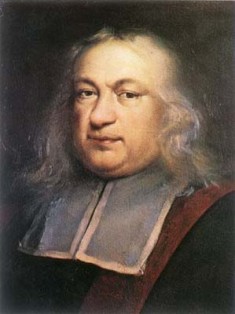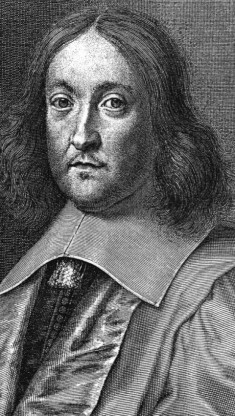| Pierre de Fermat | |
|---|---|
 |
|
| Mathematician | |
| Specialty | Mathematics & Law |
| Born | 1601 Beaumont-de-Lomagne, France |
| Died | Jan. 12, 1665 Castres, France |
| Nationality | French |
Born in 1601, Pierre de Fermat was an amateur mathematician and a lawyer in the Parlement of Toulouse, France. Pierre de Fermat contributed to the development of various theories in mathematics, including number theory, theory of probability, little theorem and laws of refraction, and many more.
Early Years
Pierre de Fermat was born in a wealthy family in Beaumont-de-Lomagne, France. His father, Dominique Fermat, was a wheat, cattle, and leather merchant and he also held the position of one of the four consuls of Beaumont-de-Lomagne. Pierre had three siblings, one brother and two sisters. He spent his childhood in the city of his birth.
There is little evidence about his schooling, but it was probably at College de Navarre in Montauban where he received much of his education. Pierre studied at the University of Orleans from 1623 and earned a bachelor’s in civil law in 1626. After his graduation, Pierre moved to Bordeaux.
In Bordeaux, Pierre started to focus on mathematical research and it was in Bordeaux where he handed over his restoration work of Apollonius’s De Locis Planis to a known mathematician there. While in Bordeaux, Pierre was in touch with Beaugrand and it was during this time he worked on Maxima and Minima and came out with important work which he shared with fellow mathematician.
Work in Mathematics
In 1630, Pierre bought a counsellor’s office at Parlement de Toulouse and was sworn in by Grand Chambre in 1631. Pierre worked at this high court for the rest of his life. He rose through the ranks at the criminal court, reaching up to the highest post in 1652. Pierre was fluent in multiple languages, including French, Latin, Greek, Occitan, Spanish and Italian. Pierre shared his work with his friends and fellow mathematicians through letters. However, he would often not provide proof for his theorems. This allowed Pierre to retain the tag of amateur while he could still gain recognition he wanted.
Pierre had a close encounter with death in the early 1650s when a plague gripped the town of Beaumont-de-Lomagne. Many people died in that plague and even Pierre was badly impacted. In fact, in 1653, he was wrongly reported as dead when he was suffering from plague. However, Pierre survived that phase and went on to continue his duties at the court. Pierre died in 1665 in Castres, Tarn.
Contributions to Mathematics
Fermat is considered one of the greatest French mathematicians of the 17th Century. He made contributions to every field of mathematics that existed during his era. He explored the mathematical areas, including analytical geometry, infinite descent, and pre-evolved calculus. He considered mathematics to be a hobby, which is why he never published his work.
 Fermat’s greatest ideas are in the area of number theory, which is the purest form of mathematics involving the study of whole numbers and the relationships between them. Fermat became particularly famous for his Fermat’s Last Theorem. According to this theorem, x to the power n + y to the power n = z to the power n has a no non-zero integer solutions for the values of x, y and z, and n is greater than 2. This theorem has puzzled mathematicians for years until recently.
Fermat’s greatest ideas are in the area of number theory, which is the purest form of mathematics involving the study of whole numbers and the relationships between them. Fermat became particularly famous for his Fermat’s Last Theorem. According to this theorem, x to the power n + y to the power n = z to the power n has a no non-zero integer solutions for the values of x, y and z, and n is greater than 2. This theorem has puzzled mathematicians for years until recently.
He also contributed to the development of calculus through his work on the properties of curves. He relied on geometric and physical intuition to find the areas bounded by these curves through a summation process. This process is now called integral calculus. He is also regarded by some mathematicians as the inventor of differential calculus.
Along with Blaise Pascal, Fermat is also known as the co-founder of probability theory. An exchange of letters between the two mathematicians developed a general formulation of probability theory. Probability theory is the mathematics of gambling, risk, and change. The theory provides the basic principles of how sporting odds are calculated today from horse racing to football.
Also known as Fermat’s Primality test, the Little Theorem tells us whether a whole number is a probable prime. These probable prime numbers are extremely important in cryptography and internet security.
In addition to his contribution to number theory and calculus, Fermat also contributed to the law of refraction. He applied his method of minima and maxima and made the assumption that light travels less rapidly in the medium. He introduced the famous laws of refraction and reflection.